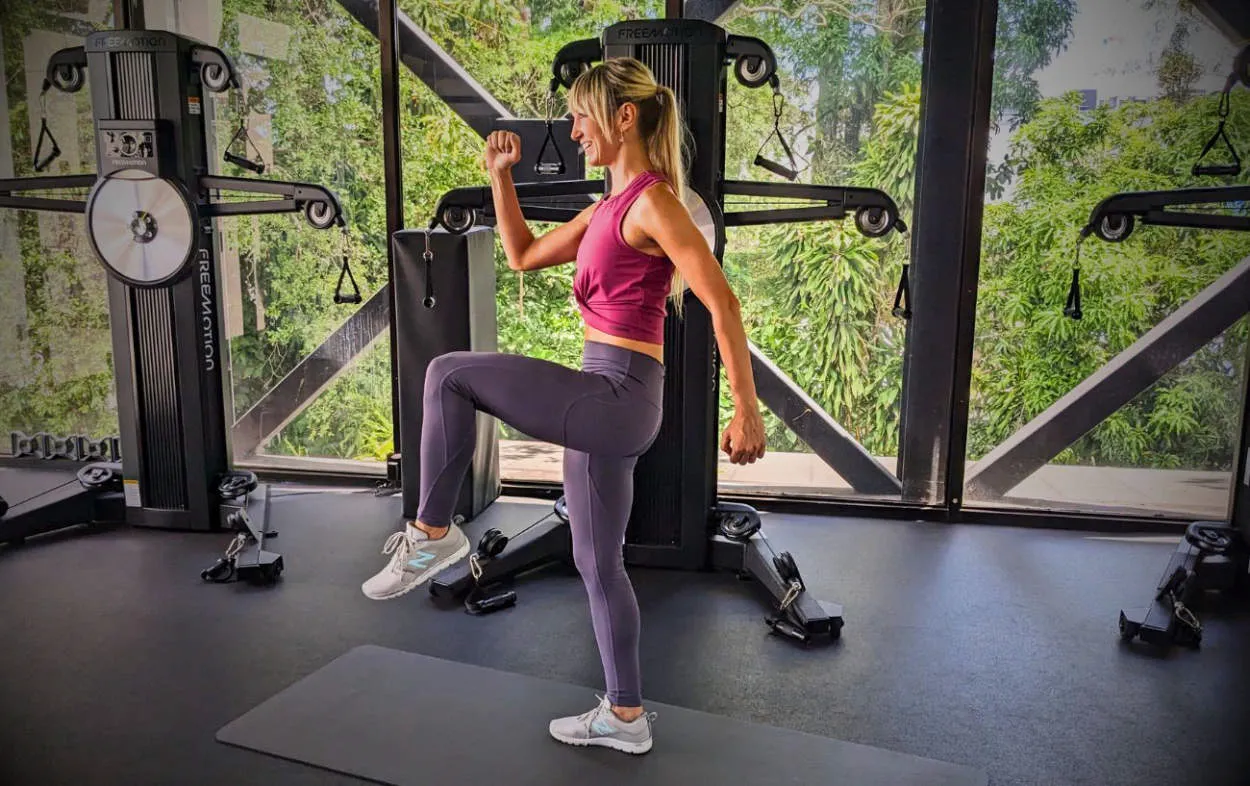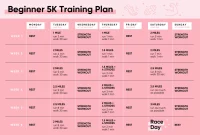Dynamic warm-up routines play a vital role in maximizing performance and preventing injuries during physical activities. In this article, we will explore various dynamic warm-up exercises and their benefits for optimizing performance in sports, workouts, or any physical endeavor.
The Importance of a Proper Warm-Up
A proper warm-up is essential for athletes and individuals engaging in physical activities. It is a crucial step before any workout or training session, as it helps prepare the body and mind for optimal performance. By gradually increasing the heart rate, warming up the muscles, and improving flexibility, a dynamic warm-up routine helps prevent injuries, enhances performance, and maximizes the benefits of exercise.
Dynamic warm-up routines involve active movements that mimic the motions of the activity to follow. This type of warm-up helps increase blood flow to the muscles and joints, loosening them up and increasing their range of motion. It also improves coordination, balance, and reaction time, all of which are essential for optimal performance across various sports and activities.
Additionally, a proper warm-up prepares the cardiovascular system for the demands of exercise. By gradually elevating the heart rate and increasing circulation, it ensures that oxygen and nutrients are efficiently delivered to the working muscles. This not only enhances performance but also reduces the risk of cardiovascular complications during intense physical exertion.
Furthermore, a warm-up primes the central nervous system, making it more responsive and efficient. This leads to improved nerve-muscle communication and quicker reaction times, which are crucial for activities that require speed, agility, and precision.
Overall, a dynamic warm-up routine is a vital component of any physical activity. It helps reduce the risk of injuries, enhances performance, and ensures that the body is prepared to meet the demands of exercise. Incorporating a proper warm-up into your routine is a simple yet effective way to optimize your physical performance and promote overall well-being.
Dynamic vs. Static Stretching
Dynamic warm-up routines play a crucial role in optimizing athletic performance and reducing the risk of injuries. Unlike static stretching, which involves holding a stretch for an extended period, dynamic stretching involves continuous movement and active stretching. This article will provide an overview of the differences between dynamic and static stretching and explain why dynamic warm-up routines are more beneficial for athletes.
Dynamic Stretching
Dynamic stretching entails performing controlled movements that mimic the motions required during the upcoming physical activity. It involves active stretching of multiple muscle groups simultaneously, enhancing flexibility, range of motion, and blood circulation. Dynamic stretching increases body temperature, activates the nervous system, and helps prepare the muscles for more intense activity.
Static Stretching
On the other hand, static stretching involves holding a stretch for an extended period, typically 15 to 60 seconds. While static stretching can improve flexibility, it is more suitable for post-workout or cooldown routines. It helps the muscles relax, reduces muscle soreness, and enhances overall flexibility in the long run. However, performing static stretches before exercise can significantly decrease muscle strength and power output.
The Benefits of Dynamic Warm-Up Routines
Dynamic warm-up routines offer several advantages over static stretching before physical activity:
- Improved Performance: Dynamic stretching activates the muscles and primes the body for increased speed, power, and agility, resulting in improved overall performance.
- Injury Prevention: Dynamic warm-ups prepare the body for rapid movements and reduce the risk of muscle strains and tears by improving joint stability and increasing blood flow.
- Enhanced Range of Motion: By engaging in dynamic stretches that simulate sports-specific movements, athletes can improve their range of motion, allowing for more significant joint mobility during exercise.
- Mental Preparation: Dynamic warm-ups not only prepare the body but also help athletes focus mentally, enhancing concentration and boosting overall performance on the field or court.
Conclusion
Dynamic warm-up routines, incorporating dynamic stretches, are preferred over static stretching before physical activity. They offer numerous benefits, such as improved performance, injury prevention, enhanced range of motion, and mental preparation. It is essential for athletes to prioritize dynamic warm-up routines to optimize their performance and minimize the risk of injuries.
Warm-Up Exercises for Different Sports
When it comes to preparing for sports activities, a dynamic warm-up routine is crucial for optimal performance. Regardless of the sport you participate in, incorporating specific warm-up exercises can help improve flexibility, enhance muscular activation, and reduce the risk of injury. Here are some recommended warm-up exercises for different sports:
1. Running/Jogging:
– Start with a light jog to increase the heart rate gradually.
– Follow with dynamic stretches like high knees, butt kicks, and leg swings to warm up the leg muscles.
– Include some walking lunges, lateral lunges, and skipping to activate the lower body.
2. Soccer/Football:
– Begin by jogging or brisk walking to begin elevating the heart rate.
– Perform exercises such as knee-to-chest, quad stretches, and calf raises to warm up the lower body.
– Add in lateral lunges, lateral shuffles, and quick direction changes to simulate gameplay movements.
3. Basketball:
– Start with a light jog or jumping jacks to increase blood flow to the muscles.
– Incorporate exercises like arm circles, shoulder rolls, and trunk rotations to loosen up the upper body.
– Include lateral slides, high knees, and vertical jumps to prepare for the rapid movements involved in basketball.
4. Tennis:
– Begin with a light jog or skipping to warm up the entire body.
– Perform exercises such as arm swings, wrist rotations, and lunges to activate the upper and lower body.
– Add in side shuffles, quick sprints, and agility ladder drills to improve speed and agility.
Remember, these are just a few examples of warm-up exercises for different sports. The key is to tailor your warm-up routine based on the specific demands of your sport and the areas you need to target. Always aim to activate all the major muscle groups and gradually increase the intensity of your warm-up to properly prepare your body for the upcoming activity.
Tailoring Your Warm-Up to Your Workout
When it comes to optimizing your performance during workouts, the importance of a dynamic warm-up routine cannot be overlooked. By tailoring your warm-up to suit the specific demands of your workout, you can enhance your performance, reduce the risk of injuries, and maximize the benefits of your training.
Understanding the Purpose of a Warm-Up
A warm-up serves as a preparation for your body, both physically and mentally, for the upcoming exercise. It increases the body’s core temperature, enhances blood circulation, loosens up the muscles, and improves joint mobility. Moreover, a warm-up primes your central nervous system, improving the mind-muscle connection and overall coordination.
Matching Your Warm-Up to Your Workout
Not all workouts are the same, and different activities require different warm-up routines. Here are some guidelines to help you tailor your warm-up to various workout types:
1. Cardiovascular Training
If your workout focuses on cardio exercises like running, cycling, or swimming, include exercises that specifically target the muscles you’ll be engaging. Dynamic stretches such as walking lunges, high knees, and arm circles can warm up the major muscle groups while getting your heart rate up.
2. Strength Training
Prior to lifting weights, incorporate bodyweight exercises that activate the muscles you’ll be using. Squats, push-ups, and planks are effective in engaging multiple muscles simultaneously. Additionally, perform some mobility exercises to improve joint range of motion and prepare your body for heavier loads.
3. High-Intensity Interval Training (HIIT)
HIIT workouts require bursts of intense effort followed by short recovery periods. For such workouts, a warm-up should include exercises that gradually elevate your heart rate, such as jumping jacks, mountain climbers, or fast-paced jogging. It’s crucial to warm up the specific muscles that will be targeted during the high-intensity intervals.
4. Flexibility and Mobility Training
If you’re engaging in activities that primarily focus on enhancing flexibility and mobility, like yoga or Pilates, prioritize dynamic stretches, foam rolling, and exercises that increase joint mobility. Move through a full range of motion with controlled movements to increase blood flow to the muscles and improve flexibility.
Final Tips
Remember, the warm-up should gradually increase in intensity and duration to prepare your body for the workout ahead. Start with lighter exercises and progress to more challenging movements. Listen to your body and modify the warm-up based on your fitness level and any specific injuries or limitations you may have.
To optimize your performance, it’s essential to not only tailor your warm-up to your workout but also regularly reassess and modify it as you progress. Experiment with different exercises and techniques, and pay attention to how your body responds. A well-designed warm-up will not only enhance your performance but also contribute to your overall fitness and well-being.
The Science Behind Effective Warm-Ups
Dynamic Warm-Up Routines for Optimal Performance
Effective warm-ups are an essential component of any exercise or sports routine. They play a crucial role in preparing the body and mind for physical activity, increasing performance, and reducing the risk of injury. Understanding the science behind effective warm-ups can help you maximize the benefits of your warm-up routine.
Increasing Blood Flow
One of the primary objectives of a warm-up is to increase blood flow to the muscles. This is achieved through activities that gradually raise the heart rate and breathing rate. Dynamic warm-up exercises, such as jogging, jumping jacks, or high knees, stimulate the circulatory system, increasing blood flow and oxygen delivery to the muscles.
Improving Flexibility and Range of Motion
Dynamic stretches are commonly included in warm-up routines to improve flexibility and range of motion. These stretches involve active movements that gently stretch the muscles and tendons. By warming up the muscles and increasing their elasticity, dynamic stretches allow for a greater range of motion and help prevent injuries, such as strains and sprains.
Enhancing Neurological Activation
Warm-ups also play a significant role in enhancing neurological activation. They help to establish the connection between the brain and the muscles, optimizing coordination, balance, and reaction time. Exercises that involve complex movements, coordination drills, or sports-specific drills can effectively activate the nervous system, enabling better motor control during physical activities.
Preparing Mentally
A successful warm-up is not just about physical preparation but also mental preparation. It serves as a transition from a resting state to an active state, allowing the mind to focus and prepare for the upcoming exercise or competition. Incorporating mental techniques, such as visualization or positive affirmations, during warm-ups can help athletes achieve a focused and optimal mindset.
Personalizing the Warm-Up
Although the science behind effective warm-ups provides a general framework, it is essential to customize the warm-up routine based on individual needs and specific activities. Factors like age, fitness level, and the type of exercise or sport should be considered when designing a warm-up. Consulting a fitness professional or coach can assist in creating a personalized warm-up routine that targets specific goals and addresses individual limitations.
In conclusion, understanding the science behind effective warm-ups can significantly contribute to optimizing performance and reducing the risk of injury. By incorporating activities that increase blood flow, improve flexibility, enhance neurological activation, and prepare mentally, individuals can elevate their warm-up routine to achieve optimal results.
Conclusion
In conclusion, incorporating dynamic warm-up routines into your exercise or sports routine is essential for optimizing performance and preventing injuries. These exercises not only increase blood flow and muscle temperature but also improve flexibility, coordination, and balance. By activating and preparing your muscles through dynamic movements, you can enhance your overall performance and reduce the risk of strains or sprains. So, don’t skip these dynamic warm-up exercises to unlock your full potential and stay injury-free.




